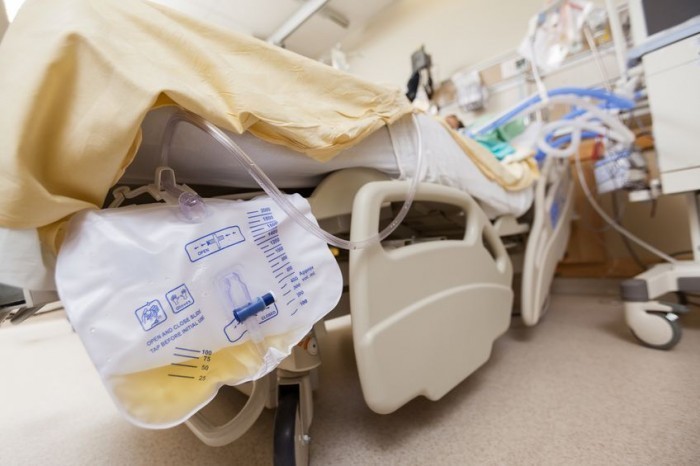
SEATTLE, WA—Following the successful mission to replace hazardous plastic straws with paper ones, environmentalists are now targeting plastic urinary catheters, hoping to swap them
out for paper catheters. The push to ban the dangerous plastic catheters gained steam after a disturbing video depicting a poor sea turtle struggling to remove a foreign object went viral.
“I actually thought it had a plastic straw stuck in its nose,” said Lou Harrison, the man who shot the video from his boat. “But when I picked the turtle up, I discovered it was not a straw and it was not his nose that was affected. Shockingly, the hard-luck turtle had a plastic urinary catheter lodged in its genital papilla. There was even some urine in it—I don’t know if it was the turtle’s or someone else’s. Anyway, I yanked on it so hard, it finally came out, along with a river of blood. Poor little guy.”
In response to the video, activists demanded a ban on plastic catheters and argued that the main alternative—rubber catheters—was also harmful to the environment. Thus, paper catheters gained popularity. They are made from the same sturdy cellulose material as paper straws—you know, the ones that instantly begin to shred and dissolve as soon as you start slurping up liquid.
“So weird,” said Davey Rome, the first patient at Seattle General Hospital to experience the pleasure of having a paper urinary catheter inserted through his urethra into his bladder. “I could’ve sworn the nurses shoved a catheter into me last night. But when I woke up this morning, it was just gone…vanished just like that. Oddly enough, I did pee out some particles of paper today—don’t know what that was about!”
The clever design of this paper-based catheter system is such that the urine empties out into a paper collection bag. “There was a large puddle of piss on the floor at the end of the day!” said a chuckling Fred Garfield, another early paper urinary catheter user. “I don’t get why they switched to paper. Is paper really better than plastic? What…we suddenly don’t give a crap about trees anymore?!”
Not everyone experienced immediate dissolution of their paper catheter, however. “Mine held up really well,” said Maurice Johnson. Fortunately for him, it turns out his urine pH was 11.0, reflecting a very alkaline urine, and paper does not seem to dissolve in alkaline solutions. Why was his urine so basic? He had a severe bacterial urinary tract infection.
“Eureka!” said staff urologist, Dr. Larry Hayes. “That’s how we will prevent these paper catheters from dissolving. We will just introduce pathogenic, highly virulent bacteria into the patients’ bladders before inserting the new catheters.”
Problem solved! Sea turtles everywhere are so grateful